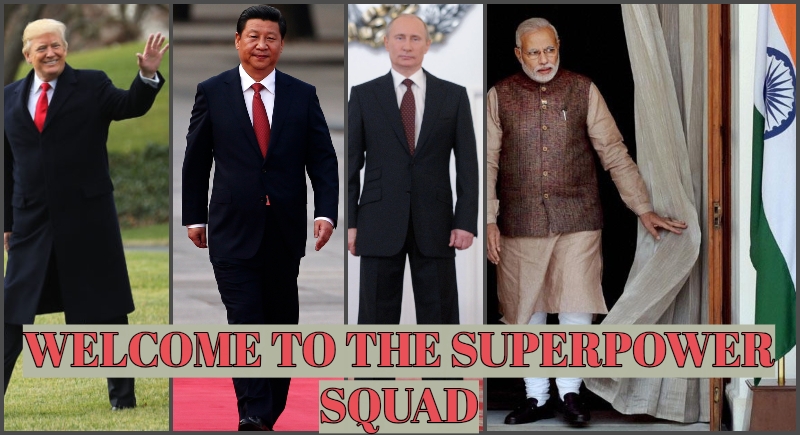Entering the squad of Superpower Giants: India ranks 4th in the Asia-Pacific region on power index
New Delhi, May 10: Welcome to the squad of ‘future gaint’! India has ranked fourth out of 25 nations in the Asia-Pacific region on an index that measures their overall power. Cultural influence and future trends have kept India on scoring high to secure the position. With this India has been pegged as a “giant of the future”.

The Lowy Institute Asia Power Index measures power across 25 countries and territories in the Asia-Pacific region.
A country’s overall power is its weighted average across eight measures of power:
- Economic resources,
- Military capability,
- Resilience,
- Future trends,
- Diplomatic influence,
- Economic relationships,
- Defence networks and
- Cultural influence.
India is ranked fourth overall on the inaugural index by The Lowy Institute, an Australian think tank.
India is ranked fourth on the parameters economic resources, military capability, diplomatic influence and fifth on resilience. It scores well on the parameters of cultural influence and future trends, ranking third in both. However, it scores low on the measure of economic relationships, ranking seventh and in defence networks, ranking 10th.
“Japan and India share major power status. Tokyo is a smart power, while New Delhi is a giant of the future,” the report said.
Among the key findings from the inaugural 2018 index are that US remains the pre-eminent power in Asia, while China, the emerging superpower, is rapidly closing in on US.
“Three of the world’s four largest economies are in Asia, and the fourth, the United States, is a Pacific power. By 2025, two-thirds of the world’s population will live in Asia, compared with just over a tenth in the West,” the Institute said.
“Asia’s economic transformation is reshaping the global distribution of power, changing the way the region—and indeed the world—works politically and strategically. Just as significantly, tensions between Asian powers will define war and peace in the twenty-first century,” it added.
The report said that India ranks third for its aggregate resources score and is set to become the fastest-growing economy in the region, predicted to grow 169% between 2016 and 2030. It also stands to gain an additional 169 million people to its working-age population by 2030.
“However, the economic giant suffers from a poor track record of converting its sizeable resources base into strategic gain in Asia—despite New Delhi’s ‘Act East Policy’. It trails behind in the influence measures, most notably in defence networks and economic relationships,” it said.
The US claims the top spot in five of the eight Index measures and a 10-point lead over China in overall power. The country retains the most powerful military force in Asia and is at the centre of a network of regional alliances that Beijing cannot match, reflected by a 65-point lead over China in defence networks.
However, in terms of economic relationships, the US lags China by more than 30 points, the glaring weakness in US influence in Asia
China holds a top-two position across all but one measure and ranks first in economic relationships, diplomatic influence and future trends.
Russia, Australia, South Korea, Singapore, Malaysia, Indonesia, Thailand, New Zealand, Vietnam, Pakistan, Taiwan, Philippines and North Korea are ranked as “middle powers”, while Bangladesh, Brunei, Myanmar, Sri Lanka, Cambodia, Mongolia, Laos and Nepal as “minor powers.”